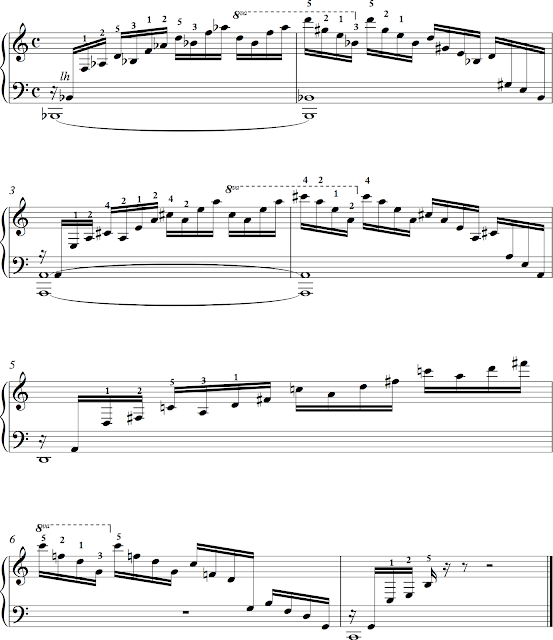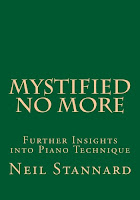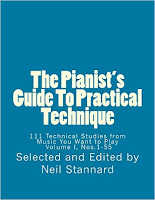 |
| Carl Czerny |
 |
| Chopin |
A reader in Norway wrote with kind words about my new book, Mystified No More. He seemed particularly interested in my contention that it is more efficient to solve technical problems in repertoire than by using prefabricated exercises, practicing X in order to play Y. Playing devil's advocate, he offered a quote by the distinguished Russian pedagogue Heinrich Neuhaus, mentor to Sviatislov Richter, Radu Lupu and others with major careers in the 20th century.
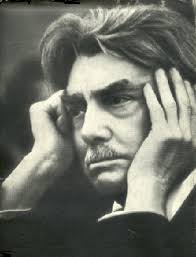 |
Heinrich Neuhaus, the Russian
School |
Neuhaus writes in The Art of Piano Playing, "One should not forget that, having begun the study of arpeggios...with the Czerny étude from the School of Velocity or the Art of Finger Dexterity, it [the study of arpeggios] should be completed with Chopin's Etudes Op. 10, No 1 or Op. 25, No. 12." Neuhaus seems to feel that practicing X will provide a path to Y. Keep in mind that the Chopin Études are concert pieces and not meant to be pedagogy, at least no more than any other technical passage in a piece of music—meaning that we learn from everything we play.
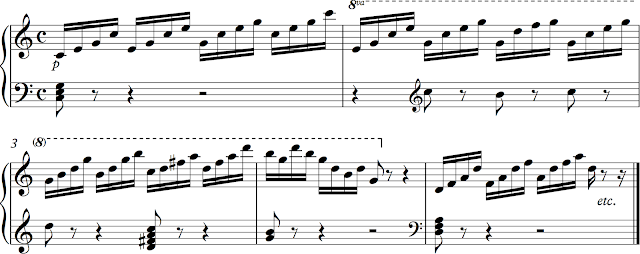 |
| Czerny School of Velocity No. 3 |
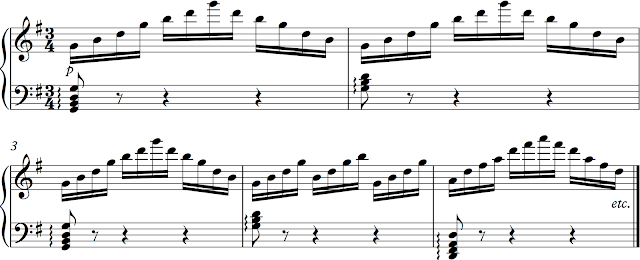 |
| Czerny Art of Finger Dexterity No. 2 |
The arpeggiated figures in Chopin's first and last études are indeed related to the Czerny examples, related in the sense that they are arpeggios. The techniques, though, are quite different, so why not practice them in the actual pieces? In the C major étude, notice that the expanse covers a tenth. So, the first issue to consider is how to avoid feeling too open:
Chopin Étude Op. 10, No. 1
Simply put, take the thumb along. This is accomplished by means of a walking hand, thumb to second finger as indicated by the bracket above. Shape slightly in for four and five by raising the forearm slightly, giving security and "strength" to those fingers (indicated by arrows). One way to practice this feeling of being "closed" is to regroup the sixteenths, feeling a start on the second finger:
Re-grouping
Incidentally, look for more agreeable fingerings later on. For example, in measure thirty-one I use the following:
Fingering
The C minor étude is more about the repeated note than the arpeggio. Use forearm rotation from five to one in the right hand and one to five in the left in order to move to each new octave position as indicated by the dotted arrows:
 |
| Chopin Étude Op. 25, No. 12 |
The arpeggio, then, is shaped slightly under in the right hand when ascending and over on the descent. The left hand is just the opposite.
Well, then, since I don't agree with Neuhaus on a pathway to music by means of Czerny studies, I ask myself what as a matter of policy do I recommend? Virtually any arpeggiated passage in the repertoire, I tell myself, that teaches the finger/hand/arm alliance what it feels like to shape. The final movement of Beethoven's Sonata Op. 27, No. 2, "Moonlight," comes immediately to mind, as do the C major concerto and the Sonata Op. 2, No. 3. Many examples abound if you want to prepare yourself for Chopin, but don't yet feel ready. Look into The Pianist's Guide to Practical Scales and Arpeggios or The Pianist's Guide to Practical Technique for more ideas. Don't waste time on exercises for which you have no particular use. Don't practice X in order to play Y.


